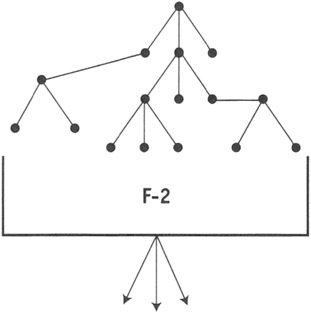Stage 2 - Project definition (QFD and new product development)
|
Stage 2—Project definition (QFD and new product development)
Phase 1: Innovation targets for subsystems
| II - 1 Review charts from Segment I | A-1 Key customer demands, key quality characteristics A-2 Voice of the engineer, key quality characteristics B-1 Voice of the customer vs. voice of the engineer B-2 Cost targets for product B-3 Preliminary breakthrough targets C-1 System changes suggested by new technology C-2 System changes suggested by voice engineer C-3 System changes suggested by quality characteristics F-1 Cost reductions of functions and systems F-2 System changes based on process decision program chart and finite element method F-3 System changes based on factor analysis and reviewed dendogram |
| II - 2 A-4 Subsystem chart | Purpose Identify the key subsystems for improvement based on the ones that have strong relationship with key (top two or three) quality characteristics. |
| II - 3 B-4 Subsystem chart Key subsystems and key quality characteristics | Purpose / Comments Identify the key functions and key quality characteristics for each of the key (top two or three) subsystems and capability indices. |
Phase 2 -: Innovation ideas for subsystems
| II - 4 C-4 Subsystems vs. systems |
|
| II - 5 D-1 Fault tree analysis vs. customer demands |
|
| II - 6 D-2 Fault tree analysis vs. functions |
|
| II - 7 D-3 Fault tree analysis vs. quality characteristics |
|
| II - 8 D-4 Subsystem failure modes vs. parts |
|
| II - 9 E-1 New concepts for subsystems vs. customer demands |
|
| II - 10 E-2 New concepts for subsystems vs. voice of the engineer (functions) |
|
| II - 11 E-3 New concepts for subsystem vs. critical quality characteristics |
|
| II - 12 E-4 New concepts for subsystems summary |
|
Phase 3 -: Innovation engineering for subsystems
| II - 13 F-2 Reviewed Dendogram (see Figure D.3) |
|

Figure D.3: Dendogram
| II - 14 F-1, F-2, F-3 |
|
| II - 15 B-2 Revise cost analysis based on engineering breakthroughs |
|
| II - 16 A-4 Critical quality characteristics vs. new subsystems |
|
| II - 17 B-4 Quality characteristics, functions, and Cp vs. key subsystems |
|
|
EAN: 2147483647
Pages: 144